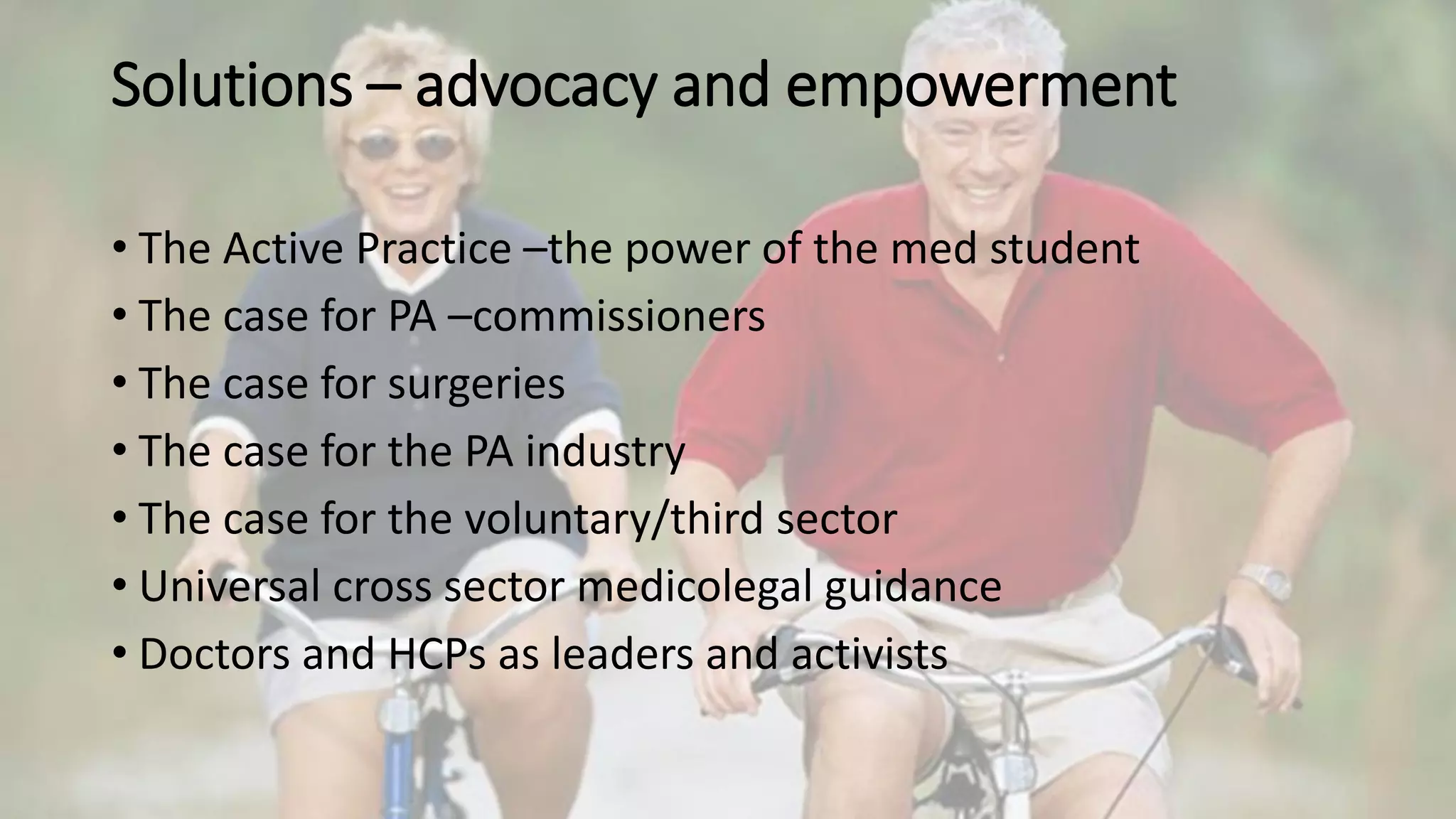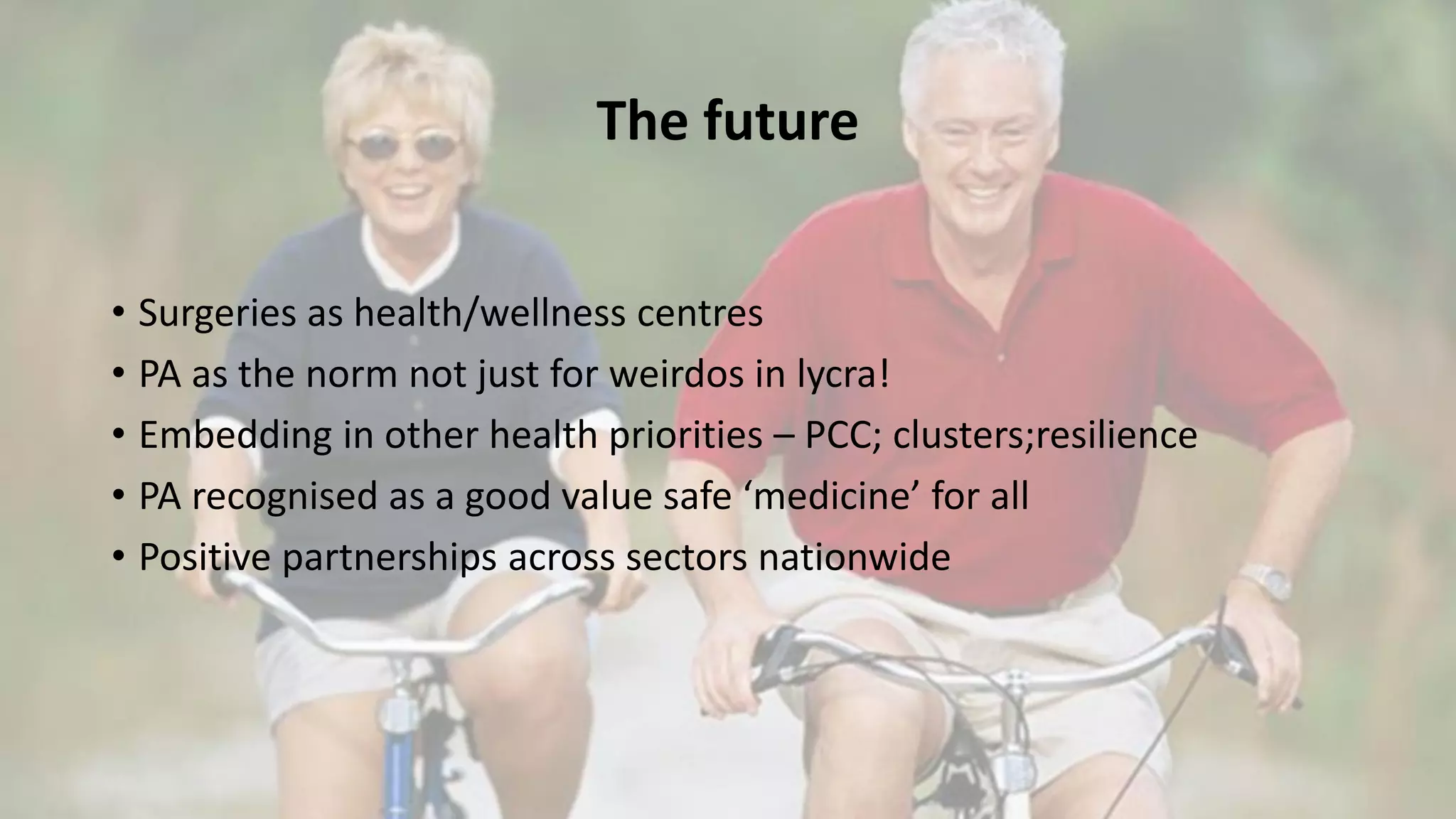This document discusses physical activity promotion in primary care. It finds that the UK has high rates of physical inactivity compared to other countries. Regular physical activity can significantly reduce the risk of diseases like cardiovascular disease, diabetes, and cancer. However, getting patients more active is challenging for general practitioners due to time constraints, lack of knowledge, and limited local exercise options. The document recommends solutions like educational toolkits, social prescribing programs, and designating practices as health and wellness centers to address these barriers and better promote physical activity.






















